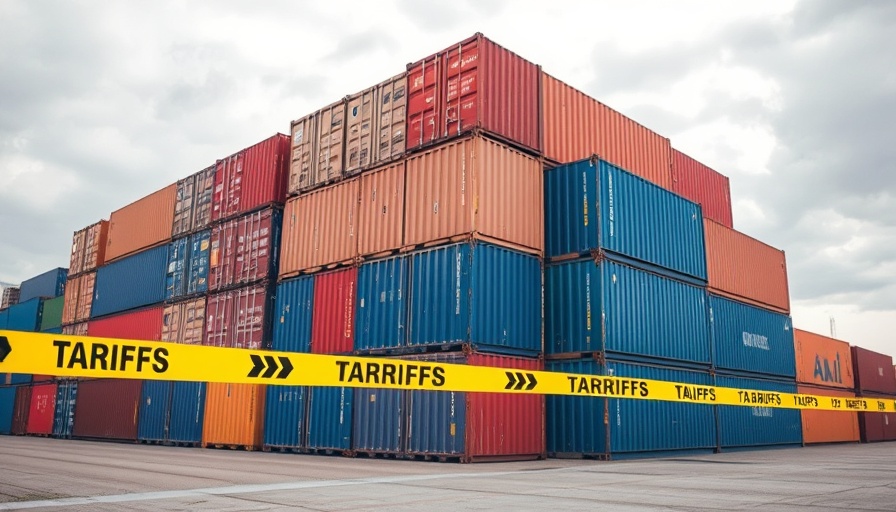
President Trump's Tariffs: What They Mean for Maryland Consumers
President Donald Trump's recent announcement of sweeping tariffs—dubbed "Liberation Day"—has raised questions for consumers in Maryland and beyond. The tariffs, set to take effect on various dates, could result in price hikes across a wide array of goods, from cars to everyday household items. As the nation braces for the economic implications, many in Maryland are wondering how their wallets will be affected.
Understanding the New Tariff Structure
The tariffs introduced are significant and multifaceted, creating a complex landscape for consumers. Trump’s plan includes a baseline 10% tariff on nearly all foreign goods, effective April 5, along with reciprocal tariffs for approximately 60 nations that currently impose high rates on American products. A 25% tariff on foreign-made vehicles is immediate, raising concerns for those seeking to buy new cars.
For Marylanders, even the local economy stands to be affected as a substantial portion of consumer goods are imported. As the National Retail Federation states, these tariffs are simply taxes that will ultimately be passed down to consumers, a reality that could lead to soaring prices in every sector of the economy.
The Impact on Prices: What to Expect
Goldman Sachs warns that the tariff on imported cars could inflate prices anywhere between $5,000 and $15,000 per vehicle. This spells trouble for consumers looking for affordable transportation, with Maryland residents relying on a mix of domestic and foreign automakers. Electric vehicles could see even steeper price hikes, limiting access to eco-friendly options.
The building and housing industries in Maryland could also face challenges. The 25% tariffs on imported building materials may push the average home price up to $9,200, exacerbating the already pressing housing affordability issues that many families face. With softwood lumber imports from Canada heavily contributing to the market, there's a potential ripple effect throughout the real estate landscape.
How Tariffs Affect Everyday Goods
Consumers can expect to feel the pinch in more than just vehicles and home prices. The impending 10% tariff will touch nearly every imported good, from electronics and clothing to food and household supplies. For health-conscious Marylanders, this could lead to increased prices on organic products, vitamins, and supplements, undermining efforts towards maintaining a healthy lifestyle.
Who Will Be Hit Hardest?
Research indicates that the most vulnerable populations will bear the brunt of these tariffs due to their regressive nature. Yale's Budget Lab found that households in the lowest income brackets could see an annual loss of $2,400 in disposable income. In contrast, wealthier citizens will experience relatively smaller financial impacts—around $9,500 lost per year. This disparity highlights the harsh reality that lower-income families may struggle more significantly to afford essentials.
Life in Maryland: Local Perspectives on Tariffs
For adults in Maryland who prioritize health and wellness, the tariffs present a mixed bag of concerns. Increased costs could detract from budgets allocated for nutritious food, fitness programs, and wellness initiatives. As the state strives towards healthier lifestyles, rising prices jeopardize the accessibility of such choices, potentially leading individuals to compromise their wellbeing.
Long-Term Economic Predictions: A Rising Tide?
Trump asserts that these tariffs will ultimately lead to domestic economic growth by generating funds to be utilized for tax reductions and easing national debt burdens. While some Marylanders may hope for manufacturing revitalization and job creation, skeptics warn that the immediate consequences could overshadow these potential benefits.
Finding Hope Amidst Economic Changes
In an uncertain economic landscape, it’s vital for Maryland residents to keep an eye on alternative ways to safeguard their finances. Empowered by optimism, consumers can explore local businesses and support community initiatives to mitigate the effects of price hikes and invigorate the state's economy. Engaging with farmers' markets, choosing local brands, and prioritizing sustainable options can be powerful steps toward resilience.
What Can You Do Now?
It’s essential that consumers remain vigilant and responsive to the unfolding economic changes. By staying informed, Maryland residents can adapt their spending habits to navigate the challenges posed by tariffs. Tracking pricing trends, supporting local economies, and seeking community solutions could foster resilience in the face of uncertainty.
The landscape may appear daunting, but understanding how these tariffs will impact individual finances is critical. As Americans brace for the possible consequences, Marylanders have an opportunity to make mindful choices that can promote wellness and stability in their lives.
 Add Row
Add Row 
 Add Element
Add Element 


Write A Comment